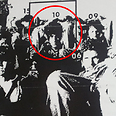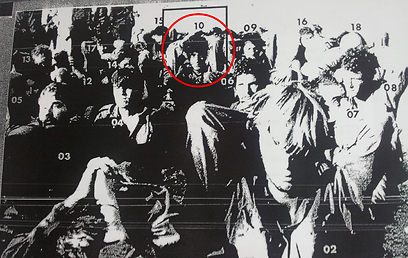
Bereaved family demands grave exhumed to 'finally identify our son'
State claims PFC Zion Tayeb fell in Yom Kippur War, but family denies, insists he was taken captive by Syrians, petitions High Court; 'mother waits anxiously for son's return,' says petition
The bereaved family wishes to conduct a DNA examination on the body and solve the question once and for all after a years-long battle against the State, which claims Tayeb died on the Hermon front.
Related stories:
- Declassified documents reveal failures of Yom Kippur War
- Morning of Yom Kippur War: Cabinet rejects preemptive strike
- State to close case against former IDF intel chief
Tayeb enlisted in the IDF on May 1973 and served in a communication company in the Nafach Brigade. He was most likely attached to the Hermon post a few days before the war broke out, when contact between him and his family was severed.
The alleged Zion Tayeb
According to the State, after falling in battle, Tayeb's body was found in a mass grave in the Hermon, identified, transferred to a mass grave in Nahariya and finally laid to rest in Jerusalem.
Conversely, the family maintained that it had never received "conclusive and satisfactory evidence or testimony as to his fate." His father refused to accept the claim of his son's death, and committed suicide two years after the war.
His 86-year-old mother, according to the petition, is "waiting anxiously for her son's return."
Differing versions
According to the official State version, the soldier was buried after he was identified by a fingerprint taken prior to his death by the police. This version is supported by the testimony of another soldier, who also served in the area during the war.
On the other hand, the mother and her four children, aided by Attorneys Shlomo Tzipori and Shlomo Rachvi, argue that this version is "ridden with holes," and that Tayeb most likely fell into Syrian captivity.
According to them, he appears in photographs, taken in November 1973, which came into IDF hands from Syria. But the family's expectations for his presumed release were shattered when the Israeli prisoners-of-war returned from Syria, without Tayeb. According to the State, the man appearing in the photographs, who the family claims to be Tayeb, has been proven to be someone else.
In addition, the family noted a Syrian officer captured by the IDF, who led his interrogators to the Hermon mass grave and named all those buried within – except for Tayeb.
As to the soldier's testimony on which the State relies, the family claims that a recent deposition of said soldier showed that he did not even know their son, and further disproved the existence of the alleged fingerprint.
An investigation by the IDF's Missing Persons Branch conducted in 2000 per the family's request determined that the fingerprint was taken from Tayeb when he was 10, but the family insisted it was impossible a fingerprint was taken from their son at that age.
Over the years, Tayeb's mother met with many officials, but according to her, they have failed to answer her pleas, and her request to exhume the grave was denied by the Defense Ministry and the Attorney General.
According to the petition, the mother refused to accept that her son is buried in the Mount Herzl grave, never visited the site and made no use of the financial recompense to which she is entitles.
"The family has a right to receive findings which will allow for a final identification and remove once and for all the uncertainty which severely harms the conduct of their lives," the petition noted.
- Receive Ynetnews updates directly to your desktop











